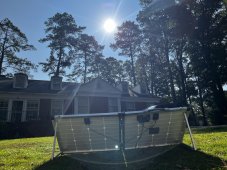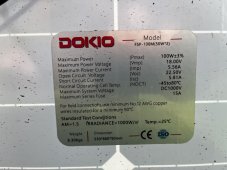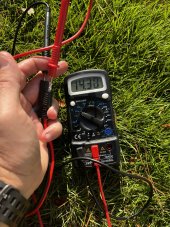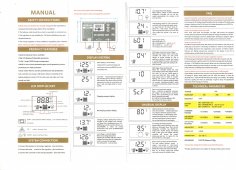Hello,
I have a 100watt 18v / 5.56 amp hard sided portable solar panel and in full sun I only see a maximum of 14.3 - 14.5 volts. I can see upwards of 5.x amps when in good sunlight but no matter what I do I never see over 14.3'ish volts - without any load, I have tested using a volt meter via 1ft pig tail direct connected to solar on 14 gauge SAE quick connect. I understand it is only a basic PWM controller, but I would think it should be capable to output more than 14.5 volts. The manual says it is a full 4-stage charge controller (I LOL at this). At 14.5v with 5amps this is only 72.5 watts even without any load. I am not expecting to see the full 100watts but shouldn't I see at least 80-90 watt'ish? I also do not see a way to increase the bulk charge voltage output in the manual. I do see a way to set the float but that is it. Or is this normal?
In this testing scenario I have not including the batteries, I am just trying to troubleshoot why the panels (or PWM) is not outputting more than 14.5
Any tips or guidance would be appreciated.
I have a 100watt 18v / 5.56 amp hard sided portable solar panel and in full sun I only see a maximum of 14.3 - 14.5 volts. I can see upwards of 5.x amps when in good sunlight but no matter what I do I never see over 14.3'ish volts - without any load, I have tested using a volt meter via 1ft pig tail direct connected to solar on 14 gauge SAE quick connect. I understand it is only a basic PWM controller, but I would think it should be capable to output more than 14.5 volts. The manual says it is a full 4-stage charge controller (I LOL at this). At 14.5v with 5amps this is only 72.5 watts even without any load. I am not expecting to see the full 100watts but shouldn't I see at least 80-90 watt'ish? I also do not see a way to increase the bulk charge voltage output in the manual. I do see a way to set the float but that is it. Or is this normal?
In this testing scenario I have not including the batteries, I am just trying to troubleshoot why the panels (or PWM) is not outputting more than 14.5
Any tips or guidance would be appreciated.
Attachments
Last edited:







